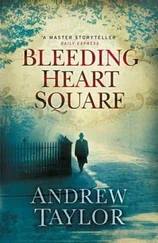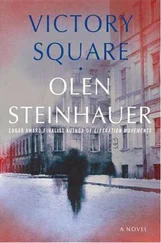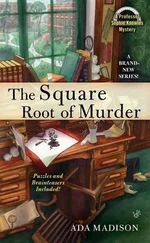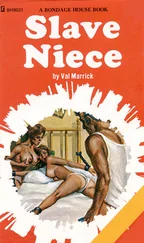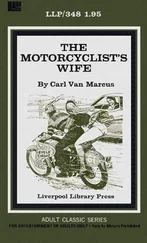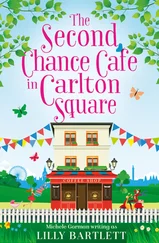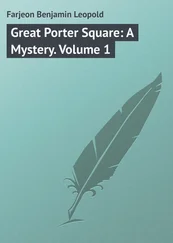For one, the copious notes Stagg had collected of Darasa’s spoke to a narrow range of issues, or at least spoke about matters from a narrow angle: metaphysical, or philological. Not that they weren’t fascinating to Stagg. Probably he studied them most closely of all, but as much for historiographical as for historical reasons. At those times he felt more kinship with the monk than with his less cerebral blood relations, Rutland and Haas.
As for the history itself, sometimes he suspected he was only checking falsehoods against further falsehoods. Even less than Darasa’s writings could he take the European records from Rutland and Haas and Knox at face value. Beyond the usual problems of transcultural interpretation confronting any historical anthropology, there were several more: the literary license taken in some of them, like Knox’s book; the commercial and imperial ambitions, latent and nascent, that lay behind these documents; and the religious coloration, the apparent sight of moral inferiors, heathens, everywhere.
A greater range of representations might have eased the problem. Stagg could then have started to solve more precisely for the nature of the history itself, the properties inhering in the world that might explain how these various impressions came about: a meta-representation that could account, possibly uniquely, for the more partial ones, just as the Cantino map systematized the observations of generations of sailors.
But the data sometimes seemed to Stagg too impoverished for that. Too many frames could comfortably accommodate it. Reconciling the inconsistencies was no less difficult. Often there was simply the word of one against another, or the preponderance of evidence would come down to a single datum leaning ever so slightly one way. The outcome could be that precarious.
Part of the poverty of information was induced by the island’s climate. The swelter quickly rotted any document that wasn’t expressly preserved. In the great vehars and the royal court, manuscripts would be stored in rooms lined with the spongy roots of a rare native shrub growing along the Highland mountain peaks. After a few months the roots would become fat with water, at which point they would be replaced. But the root’s scarcity meant that little was preserved that did not pertain to the priesthood or the court.
Most commoners didn’t believe the everyday was worthy of collective remembrance anyway. Crises, denouements, counted for more. So the quotidian, Stagg felt, went unrecorded and something like Freytag’s pyramid, its legs and vertices — the five acts of a classical drama, like his own recurrent dreams — were taken up into the space of myth through the gateway of meter and verse. That was the structure of the Chronicles.
Rutland’s letters and journals, which he’d kept religiously during his captivity, were Stagg’s primary British counterpoint to Knox’s book (Haas’s more fragmented diaries formed a Dutch one). For years the letters to Rutland’s wife had lain in the old country house in Canterbury, the one Stagg had spent half of June researching at with Renna; and the rest, the ones to Rutland’s father and to his invalid sister, along with most of the journals, in Rutland’s childhood home in Portsmouth, still owned by the family.
Some of these records, the ones relevant to legal matters surrounding missing cargo of the East India Company, say, or compensation for men lost on the Ann, were made available to the British courts. When their historical value came to trump their legal significance, some of the letters went to the British Library, others to the Fitzwilliam Museum, in Cambridge. But there were many more that were neither needed by nor disclosed to the courts, and these came down through the generations almost as family heirlooms. Gareth Rutland had organized and archived them a century ago, and in fact considered undertaking the very study his descendant, Stagg, was now conducting.
Together, the letters and journals chronicled the unfolding of Stephen Rutland’s hopes. From them, Stagg thought, the scope of his talent for suffering might be recovered. There were over four hundred letters, not really so many given the many years of captivity. (Very few of his crew, just he and Knox, as far as Stagg knew, made it back to England in the end.)
The letters were carried back home mostly on English and Dutch trader ships, sometimes light military vessels. They were taken first to the Ceylonese ports on foot — Colombo, Manaar, Trincomalee, and Jaffna — by Dutch messengers, Arab traders, and French explorers. Rutland had sneaked many of them to Sinhalese villagers he’d befriended over the years of captivity, years correlating precisely with the Bubonic plague’s sweep through Europe. Captivity by God’s grace, he would write later. Taking pity on him, the Sinhalese would find ways to get his letters into the right hands when he himself could not.
The letters were generally five or six pages, written on a local paper, not palm, that was pressed by the Dutch. It was made from coarse plant fibers that flecked the cream of the paper with gray, black, and green. The imperfections distorted Rutland’s wide script, which he’d applied in a heavy ink with the feathers of those red cocks native to the island. His line jittered, being pushed to one side or the other by the topography of the pulp. His mind might have jittered too.
Each sheet was housed in polythene now, and stacks of them sat all around Stagg’s apartment. Most were in good shape, not only because of the efforts of various Rutlands over the centuries, but because the coarse pulp was naturally low in acid. A more refined stock might have been dust by now
They circled around just a few issues: the resolution of business matters back in England, with his father; how the affairs of his house should be handled in his absence; and, most important for Stagg, what his life was like in Ceylon, offered through small sharp glimpses of the island, as if they, more than anything more systematic Rutland might say, could most effectively close the distance between them.
Rarely were they explicit about the depth of his anxiety. Yet the only feelings he omitted were the ones he had about himself. His affection for his wife, father, and close friends was everywhere in evidence, always in the tone, and sometimes in closing paragraphs and postscripts, where he would describe an experience common to their lives he was particularly fond of, the contemplation of which now brought him pleasure.
Anxiety and despair, these were reserved for the journals, though even his lamentations were crosscut with precise physical description. Stagg had so far located only six of these books, in palm paper. Their pages tell that more were composed, probably too many to carry through the mangroves of Manaar in the escape.
That he carried any at all is a surprise. They were thick volumes, together weighing some twenty pounds. They would have compromised his chances of escape by some margin. But, Rutland writes, leaving without the journals would be like leaving twenty years behind, mercurial ones, and in all likelihood, he recognized even then, the most interesting ones, if also the most difficult, he would ever live. He’d kept them at the bottom of his rucksack on the escape through the midland swamps, not allowing Knox to know he hadn’t left them behind, as Knox had left his own.
Knox’s Historical Relation was composed mostly from memory back in London. So, for all its texture, it had to be more abstract than Rutland’s contemporaneous chronicle. (It was unclear when Haas’s records were composed, or even how exactly they’d made their way to the Austrian library Stagg had found them in.) The density of detail in Rutland’s unpublished writings easily outstripped Knox’s work, whether about village architecture, the structure of the court, flora and fauna, hunting techniques, or trade with the Europeans.
Читать дальше


